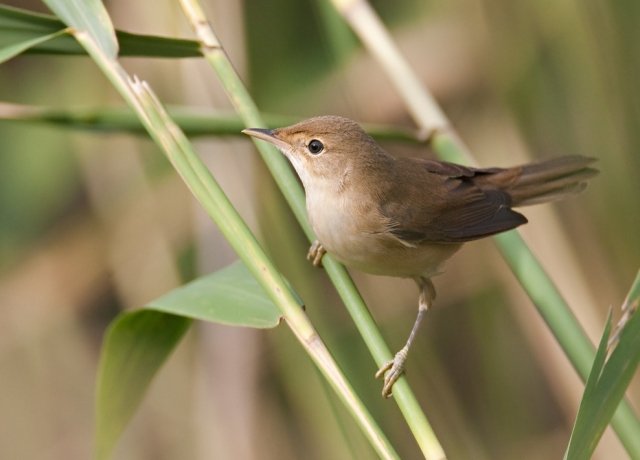Eurasian Reed-Warbler
Eurasian Reed-Warbler
NL: Kleine karekiet
D: Teichrohrsänger
F: Rousserolle effarvatte
Latin name: Acrocephalus scirpaceus (Linnaeus, 1758)
Bird group: Warblers
The Eurasian reed warbler, or just reed warbler (Acrocephalus scirpaceus), is an Old World warbler in the genus Acrocephalus. It breeds across Europe into the temperate western Palaearctic. It is migratory, wintering in sub-Saharan Africa.
The genus name Acrocephalus is from Ancient Greek akros, “highest”, and kephale, “head”. It is possible that Naumann and Naumann thought akros meant “sharp-pointed”. The specific scirpaceus is from Latin and means “reed”.
An older scientific name for the reed warbler was Acrocephalus streperus (Vieill.).
This small passerine bird is a species found almost exclusively in reed beds, usually with some bushes. Direct counts of territorial males in suitable habitat and sampling the population sex-ratio can be a proper alternative to inference-rich predictive modeling based on imperfect habitat-extrapolation of densities of reed warblers at large spatial scales.
This is a medium-sized warbler, 12.5–14 cm in length. The adult has an unstreaked brown back and buff underparts. The forehead is flattened, and the bill is strong and pointed. The sexes are identical, as with most warblers, but young birds are richer buff below. The Eurasian reed warbler looks similar to the great reed warbler, but the great reed warbler is larger in size and has a stronger supercilium.
Food:
Like most warblers, it is insectivorous, but will take other small food items, including berries.
Song/call:


